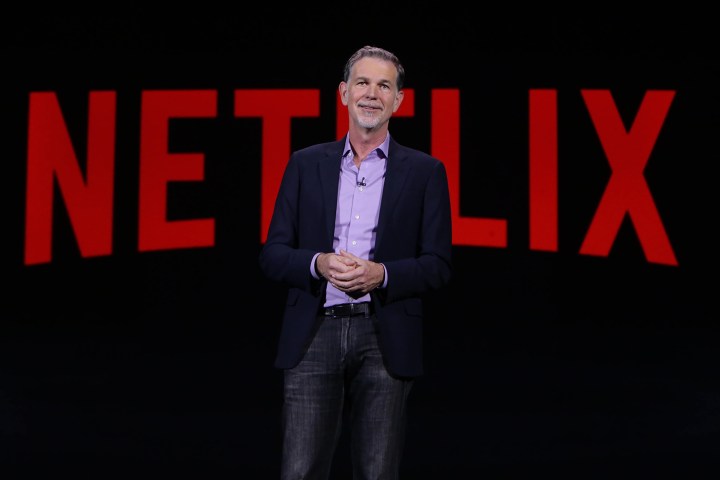
In the first three months of the year, Netflix added a record number of new subscribers as it continued its expansion to 130 countries in January. The service added 6.74 million subscribers, pushing its total subscriber base past 81.5 million, beating its own estimates and passing its previous record by over a million subs. 42 percent of those new users were added from outside the U.S. as Netflix began to dig footholds in across the globe.
But as far as investors were concerned, it wasn’t nearly enough: The stock dropped by over 3 percent as of publication, and after-hours trading puts that drop at as much as 10 percent. So what gives?
The Wall Street Journal pegs the reason on a number of things, including a weak outlook going forward. Next quarter, Netflix is expected to add just 2.5 million subscribers, only 500,000 of which will come from the U.S. And, as Netflix itself admits, it’s going to be harder to add more U.S. subscribers in the future because, well, it already has huge penetration here. Netflix is so big stateside that it’s estimated to account for as much as 37 percent or more of North American Internet traffic at peak hours.
A number of outside factors are putting more pressure on the company. Amazon’s new plan to offer its streaming video service on a month-to-month basis for $9 per month conveniently broke today, which makes for very interesting timing, while Netflix’s previously-announced price rise to $10 per month will take effect for 17 million subscribers in May.
Related: Expand your streaming options with the Roku 4
Also hurting the company’s outlook are fears of even slower growth going forward, especially, as you might guess, on its home turf. Those issues are only expected to grow in the coming months as more and more competitors enter the market, from premium networks like HBO, Showtime, and Stars, to rival streaming services like Amazon and Hulu, and a variety of other platforms including basic cable channels, startups, and others. That said, Netflix anticipated these subscriber growth issues long ago, which is a huge reason the company bet big on moving overseas to become a global powerhouse in the coming years.
Netflix expanded on its plans abroad in the report, saying that it expects its churn rate when it comes to lost subscribers overseas will improve due to “recent favorable currency movements.” However, the company waffled on its plans to go after the really big fish in the streaming sea, China, saying “we are continuing discussions but have no material update on our approach or timing.”
Finally, Netflix commented on its plans for moving deeper into Hollywood with its push for more original films, saying it will put 5 percent of its budget toward that effort in the near future. The company also may increase that budget if things pay off in the near term.
“As we learn, we may spend beyond that,” the company said, “once we’ve established that new, fully exclusive movies debuting on Netflix creates more consumer excitement.”
As the streaming market continues to grow at a monster pace, Netflix will see more hurdles ahead in its quest for global domination, and that will bring along more stock bounces. So far, the streaming innovator has been able to roll with the punches. The next few years may well be integral in deciding whether or not Netflix can remain the streaming powerhouse to beat in the U.S., and beyond.
Editors' Recommendations
- Netflix to hide its subscriber numbers starting in 2025
- Netflix gears up to increase prices again, report claims
- 7 most controversial Netflix movies ever
- Heat is one of the best movies ever. Here’s why you should watch it on Netflix right now
- The worst Netflix movies ever, ranked
